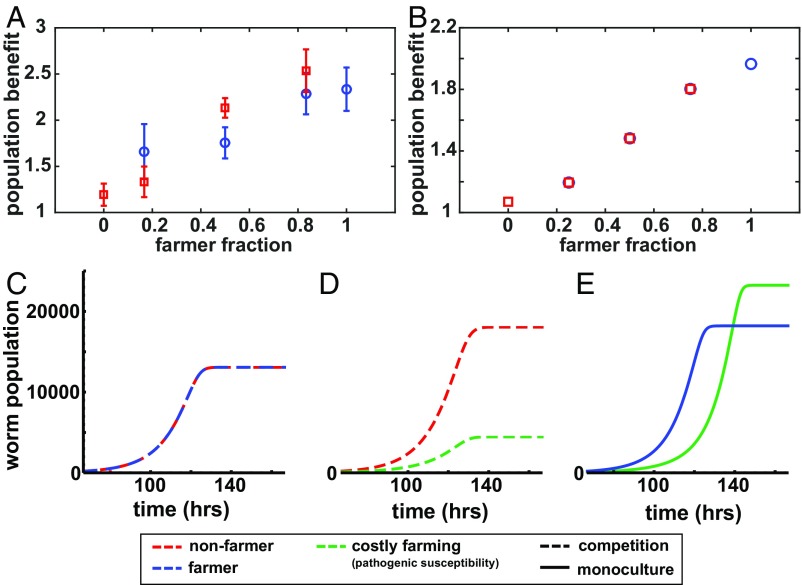Fig. 4.
Redistributed bacteria is a potentially costly public good. (A) Normalized worm population from competition experiments between N2 worms and srf-3 mutant for two different plate sizes (R = 7.5 cm and R = 2.75 cm). The population increase is the ratio of the worm population on the R = 7.5 cm plate to the population on the R = 2.75 cm plate. n = 4 for each experiment. (B) Corresponding data of the competition between farmers and nonfarmers from mathematical model (see SI Appendix for details). (C–E) Mathematical model trajectories of worm population sizes in competitive (solid curves) or clonal (dashed curves) growth conditions. Worm counts are normalized by the initial numbers of that phenotype in the simulation. Competitive dynamics of farmers and nonfarmers (red) when farming inflicts no mortality cost (blue) (C) and some mortality cost (green) (D). (E) Clonal dynamics of farmers with and without mortality cost. The plate size is R = 7.5 cm. All parameters are as in SI Appendix, Table S1.

